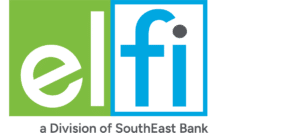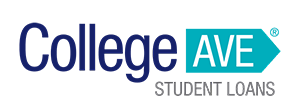Graduate school can be expensive — so where do you find the best private graduate student loans once you’ve exhausted other alternatives?
Like undergrad, you want to first use any grant, scholarship, and fellowship money before considering loans. Then it’s time to pursue funds through federal loan programs before exploring private student loan options.
Let’s compare the best private graduate student loans to see how they size up against one another.
Brief Overview of Federal Options vs Private Student Loans for Graduate School
There are two main solutions for funding your graduate school education when borrowing money. First, the federal direct and PLUS loan programs that are funded by the US Department of Education and, second, private student loans from the consumer marketplace.
Similar to undergrad, you will get the same advice to exhaust your federal loan options before accessing the private lending market. This is a good rule of thumb, since the federal program carries a more impressive list of benefits, borrower protections, and repayment options.
However, on the downside, as of July 2022 federal direct unsubsidized graduate school loans have an origination fee of over 1% and PLUS loans have an origination fee of over 4%.
Private loans don’t have application fees, origination fees, or prepayment penalties.
Federal Direct Unsubsidized Graduate School Loans
Like all federal loans, direct unsubsidized graduate school loans are obtained through the Free Application for Federal Student Aid (FAFSA) process. Here are more details on federal direct unsubsidized graduate school loans:
- You can borrow up to $20,500 annually and $138,500 in total (which includes undergraduate loans).
- Federal loans tend to have lower interest rates set by Congress
- It’s good to exhaust direct unsubsidized loans before PLUS loans since they have lower fees and interest rates
- Federal loans are not credit-based and don’t require a cosigner, so they’re good for graduate students who have minimal credit history or a low credit score.
- These loans offer the same interest rate to everyone regardless of financial history.
- The loans have an origination fee of 1.057% as of July 2022 (as set by Congress).
- Loan terms are 10 to 25 years (based on repayment plan).
- You must be enrolled at least half-time to be eligible.
- Forbearance is available in some circumstances for up to three years.
Federal Grad PLUS Loans
Another federal loan option for graduate school is Federal Grad PLUS loans. Here are some key features of Grad PLUS Loans:
- Higher interest rates and fees than direct unsubsidized federal loans.
- You can borrow more money – possibly up to the total cost of your degree, minus any other aid received.
- PLUS loans are good as a supplement once you have reached the maximum for direct unsubsidized loans.
- The loans have an origination fee of 4.228%.
- PLUS loans require a credit check.
- Loan terms are 10 to 25 years (based on repayment plan).
- Forbearance is available in some circumstances for up to three years.
Federal Health Professions Student Loans
For those pursuing graduate work in healthcare, federal health professions student loans include the following benefits:
- They are primarily for physicians, dentists, pharmacists, optometrists, and veterinarians.
- To qualify, you will have to demonstrate financial need.
- Other eligible degree programs include advanced nursing and paraprofessional degrees, like Nurse Practitioners, as well as Physician’s Assistants.
- Offers competitive interest rates.
- Loans offer a 12-month grace period following graduation.
- May cover up to the cost of attendance, less any other loans or sources of funding.
- Not eligible for Public Service Loan Forgiveness or income-driven repayment plans unless consolidated into a direct loan.
The 4 Best Companies for Private Student Loans
Our Top-Rated Picks for 2023 Offer Low Rates and No Fees
Option to skip a payment once a year

In-school deferment available if you return for another degree

Optional $25 payment plan during school to reduce interest after graduation

1% Cash Back Graduation Reward program
Fixed Rate
Variable Rate

Fixed Rate
Variable Rate
Private Student Loans
In the next section, we will review specific private student loan benefits by company, including any pros and cons. Here are some attributes common to all private lenders:
- No hard credit check to see your rates. They only pull a ‘soft credit’ history which will not negatively affect your credit score.
- No pre-payment penalties.
- No application or origination fees.
- Most private student loan lenders offer both fixed and variable rates.
Comparing Private Student Loans for Graduate School
When considering private student loans for graduate school, it’s important to compare the pros and cons, as well as to understand each company’s unique programs, benefits, and special offers. From there, you can obtain pre-qualified rate quotes from lenders to determine your best option.
Read on for an overview of the top private student loan lenders to see which programs meet your needs.
College Ave
Terms:
- Available terms include 5, 8, 10, and 15 years
- Fixed and variable rates
- Loan limit up to the total cost of attendance
Pros:
- Loans available if attending less than half-time (which is good if you work full-time and only take a class or two each term)
- Minimum credit score requirement in the mid-600s
- Up to 12 months of forbearance in three-month increments
- International students can qualify with a cosigner
- $150 cash bonus upon graduation
Cons:
- Loan servicing is done by a third party
- No clear forbearance policy; awarded case-by-case
- Repayment term before cosigner release could be shorter
Ascent
Terms:
- Available terms include 7, 10, 12, 15 and 20 years
- Fixed and variable rates available
- Maximum loan amount of $400,000
Pros
- Allows cosigners
- Offers non-cosigned outcomes-based loans, which consider GPA, major, school and other non-credit factors to determine eligibility
- Up to 24 months of forbearance possible in three-month increments
- 1% cash back reward after graduation
- Forbearance up to 12 months for financial hardship three months at a time
- International and DACA students can qualify with a cosigner
Cons
- Must be enrolled at least half-time
- Cosigner release not available to international students
Earnest
Terms:
- Available terms include 5, 7, 10, 12, and 15 years
- Fixed and variable rates available
- Loan limit up to the total cost of attendance
Pros
- Ability to skip one payment per year
- Forbearance available for up to 12 months
- 9-month grace period following graduation
- Must be in school at least half-time
- International students can qualify with a cosigner
- No late fees
- In-house loan servicing from start to finish
Cons
- No cosigner release, refinance needed to drop a cosigner
ELFI
Terms:
- Available terms include 5, 7, 10, 15, and 20 years
- Fixed and variable rates available
- Loan limit up to the total cost of attendance for the requested academic period
Pros:
- Excellent customer service with weekend hours
- Dedicated Personal Loan Advisor to guide you through the loan process
- Forbearance up to 12 months with financial hardship or medical issue
- Allows greater than minimum payments via autopay
- No application fees, origination fees, or prepayment penalties
Cons:
- No cosigner release available
- Must be enrolled at least half-time
Custom Choice
Terms:
- Loan terms 7, 10, or 15 years
- Fixed and variable rate loans available
- Loan limit is $99,000 annually, up to $180,000 total
Pros:
- 2% graduation reward through principal reduction
- Returning borrower advantage program makes it easier to apply for a new loan if you have already been approved by Custom Choice
- Flexible repayment options (deferred, flat payments, interest only, and immediate repayment)
- Allows biweekly payments and greater than minimum payments via autopay
- Eligible for cosigner release after 36 consecutive, on-time payments if you meet eligibility criteria on your own
- Available to students enrolled less than half-time
Cons:
- No specific eligibility requirements provided up front
How to Find the Best Private Graduate Student Loans for Your Circumstances
Now that you know a bit about the various lenders that want to compete for your business, let’s talk about how to find the best deal for your private graduate student loan.
Rather than go to each lender’s site and fill out a separate quote application, you can visit our rate comparison page to get pre-qualified offers from several lenders.
All you do is enter some basic information about yourself and your cosigner (if you are using one) like your demographic information, income, school you are attending, and degree program.
After submitting the form, you’ll undergo a soft credit pull (which has no impact on your credit score) and receive offers from multiple lenders at once, making it easy to compare options.
















